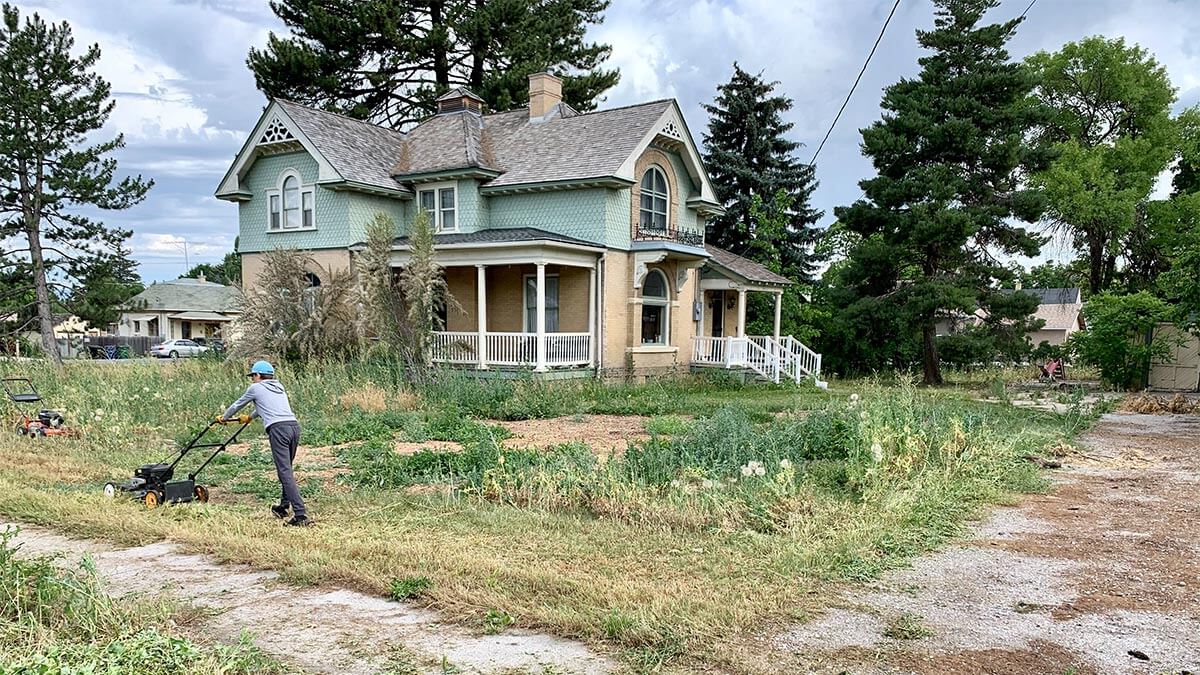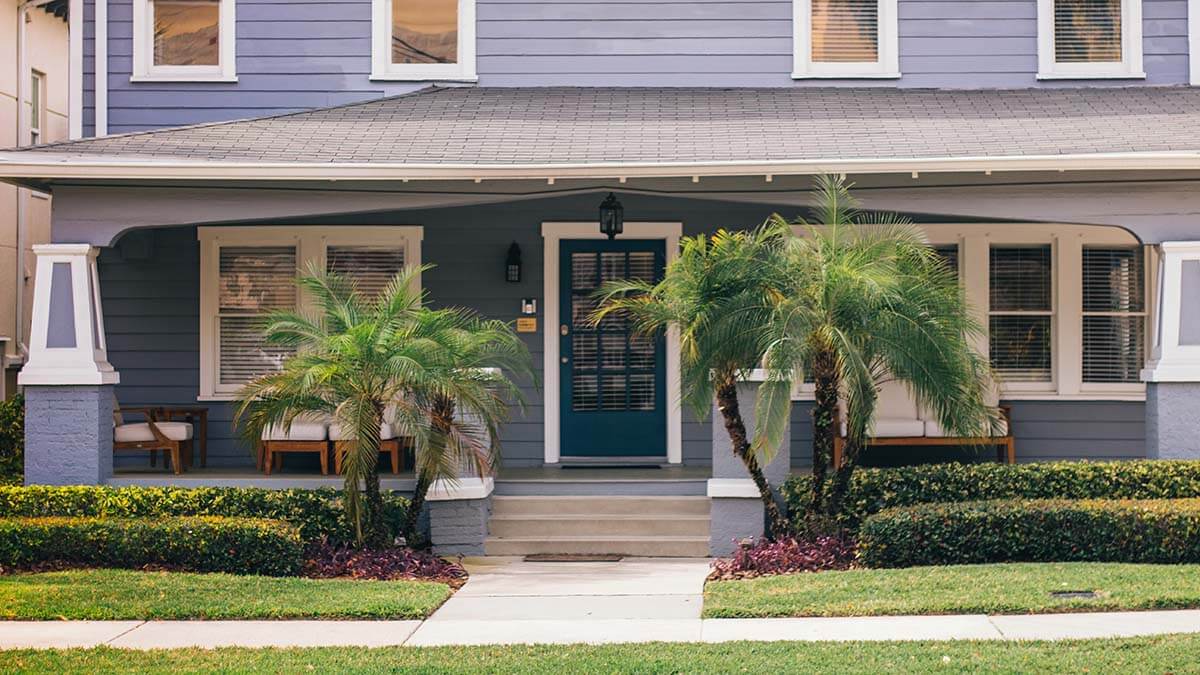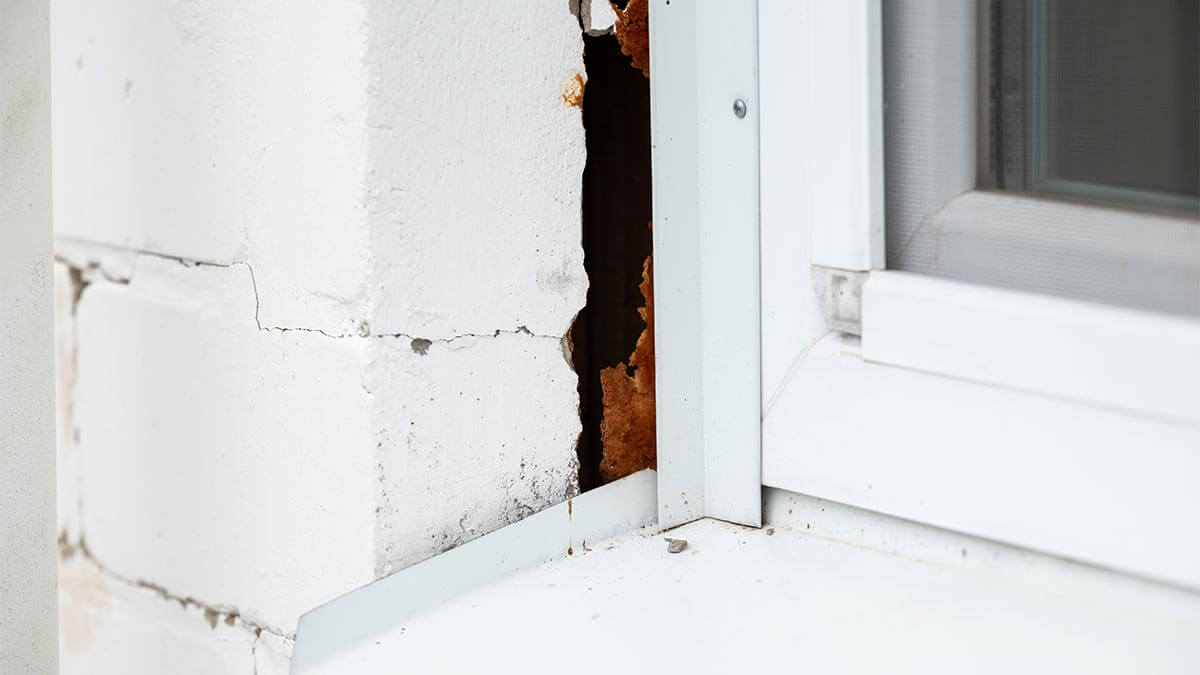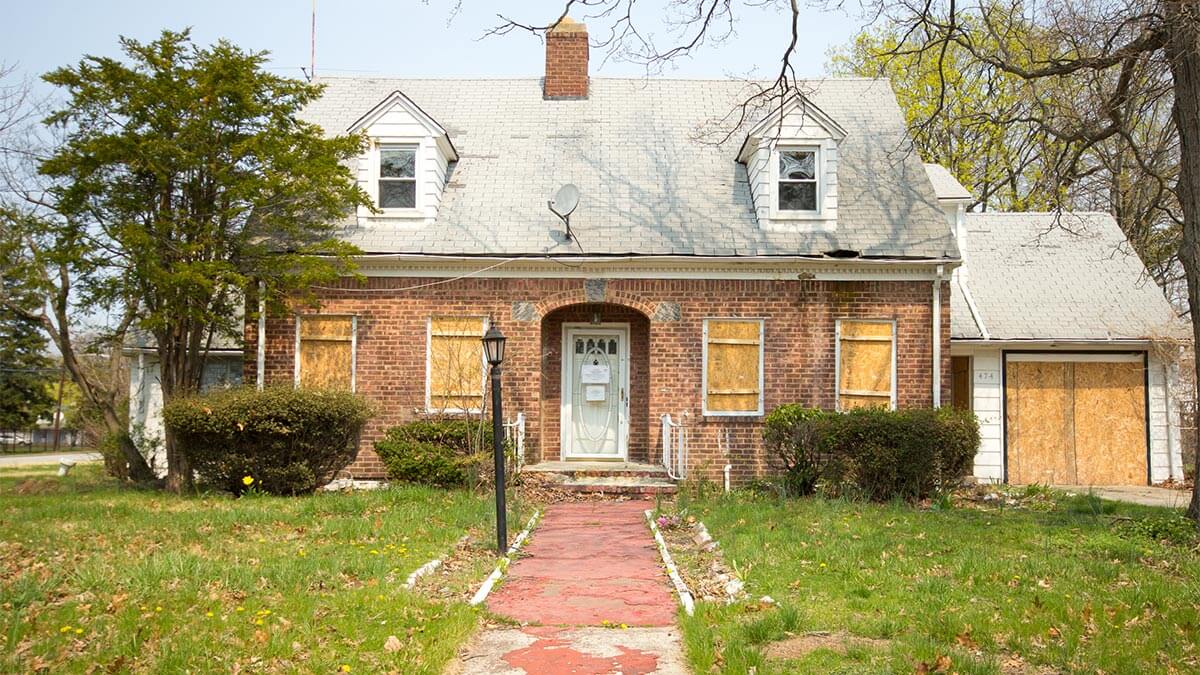Selling your house brings a barrage of decisions, especially regarding repairs and upgrades. It’s easy to assume that fixing everything will lead to a better sale, but this isn’t always the case.
This article will explore what not to fix when selling a house. We aim to guide you through the process of identifying the changes that truly matter versus those that don’t add significant value. From minor cosmetic flaws to partial upgrades, we’ll dissect which aspects of your home can be left as is, allowing you to focus on what really counts.
Want to know how to strike the perfect balance between making necessary improvements and avoiding unnecessary expenses? Keep reading to unlock the secrets of a smart and strategic home sale.
Compare Cash Offers from Top Home Buyers. Delivered by Your Local iBuyer Certified Specialist.
One Expert, Multiple Offers, No Obligation.
Cosmetic Flaws: Look Beyond the Surface
When selling your house, it’s easy to become fixated on every little imperfection, from scuffs on the walls to small cracks in the plaster. However, it’s important to remember that these minor cosmetic flaws are usually not deal-breakers for buyers.
The Reality of Minor Flaws
Most buyers are looking at the overall potential of a house, not scrutinizing every minor detail. They understand that a lived-in home will have signs of wear and tear, and these small blemishes can actually make the space feel more welcoming and authentic.
Perception of Lived-in Homes
A home with minor cosmetic issues can appear more inviting and lived-in compared to one that looks overly polished. It’s about creating a balance that shows the home has been cared for, without feeling like a sterile, impersonal space.
Cost vs. Value
Fixing every minor cosmetic issue can be both time-consuming and expensive, with little return on investment. Buyers often plan to personalize their new home anyway, so leaving some minor flaws can give them the space to envision their own improvements.
The Bottom Line
When preparing to sell your house, focus on cleanliness and general maintenance rather than obsessing over small cosmetic flaws. These imperfections rarely detract from the overall appeal of a home and can even contribute to its charm, making it feel more approachable and realistic for potential buyers.
Window Dressings: Clear the View
When preparing to sell your house, you might ponder whether to replace old or broken window treatments. Interestingly, it might be more advantageous to remove them entirely rather than replace them.
Embracing Natural Light
One significant advantage of removing outdated window treatments is the influx of natural light. Bright, well-lit rooms are highly attractive to buyers, creating a sense of spaciousness and cleanliness. Old, heavy drapes or damaged blinds can obstruct this light, making rooms feel smaller and less inviting.
By taking them down, you allow each room to be flooded with natural light, showcasing its true potential and size.
The Appeal of a Blank Canvas
Modern homebuyers often prefer a space they can personalize. Old window treatments, especially if they are style-specific or heavily patterned, might not align with the taste of potential buyers.
Removing these treatments can transform the space into a neutral backdrop, allowing buyers to envision their own decor and style in the home.
Cost-Effective Choices
Opting not to replace window dressings can be a smart financial decision. Quality window treatments can be expensive, and there’s no guarantee that the investment will significantly increase your home’s selling price.
By eliminating this expense, you can allocate your budget to more impactful updates or adjust your selling price to reflect the home’s current state, making it a more attractive option for buyers looking for a home they can customize.
Avoid Partial Upgrades: Complete Makeover or None
When selling a house, one of the more tempting routes to take is to partially upgrade high-traffic areas like the kitchen and bathroom. However, this approach can often backfire. Partial remodels, while seemingly cost-effective, can highlight the outdated areas of a room, creating a mismatched and unfinished appearance.
The choice often boils down to going for a complete makeover or leaving these rooms as they are for the new owners to decide.
The Mismatch Dilemma
A partial upgrade can result in an inconsistent look, where new installations clash with older elements. For example, installing new countertops in a kitchen with outdated cabinetry can make the cabinets look even more worn out.
This disjointed appearance can be off-putting to potential buyers who might struggle to see the room as a cohesive whole.
Buyer’s Preference for Consistency
Most buyers prefer a consistent style and quality throughout the house. A partially upgraded space can send mixed signals, leaving buyers to wonder why some elements were updated while others were neglected.
This can lead to doubts about the overall maintenance and care of the property.
Full Remodel or Leave As Is
Given these challenges, the smarter approach is often to choose between a full remodel or selling your house as is. A full remodel can significantly increase the value and appeal of your home, but it’s a substantial investment.
If you’re not prepared to commit to a complete upgrade, it’s often better to leave the room in its current state. This allows the new owners to make their own changes according to their taste and budget.
The Advantage of Potential
Selling a home ‘as is’ also presents the potential for buyers to add their personal touch. Many buyers enjoy the prospect of customizing a space to their liking. By not engaging in partial upgrades, you provide them with a blank canvas, which can be a unique selling point in itself.
Minor Issues Are Minor: Overlooking Small Problems
When getting ready to sell your house, it’s easy to get caught up in the details, worrying about every small imperfection. However, it’s important to recognize that certain minor issues, particularly in areas like electrical, plumbing, and HVAC systems, typically don’t need to be fixed before a sale.
These small problems are often considered part of a home’s normal wear and tear and usually don’t deter serious buyers.
Electrical: Small Quirks
In the realm of electrical issues, think about things like light switches that are a bit quirky or outlets that are outdated but still functional. These are not major concerns for most buyers.
Of course, any serious electrical problems that pose a safety hazard should be addressed, but minor inconsistencies or dated aspects often don’t need attention.
Plumbing: The Little Drips
In plumbing, small leaks in a faucet or a slow-draining sink might seem like red flags, but they’re typically seen as minor fixes that the new owners can easily handle. What’s crucial is ensuring there are no major leaks or water damage, as these are serious concerns that can affect the home’s value.
HVAC: The Hum and Whir
With HVAC systems, minor issues might include a system that’s a bit noisy or an older thermostat. As long as the system is functioning well overall, these small concerns are usually not deal-breakers.
Buyers often plan to upgrade HVAC systems to suit their preferences anyway, so a slightly older system shouldn’t be a major concern.
Emphasizing the Big Picture
The key is to focus on the overall functionality and safety of your home. Addressing major concerns is important, but sweating the small stuff can lead to unnecessary expenses and delays.
By understanding what minor issues can be overlooked, you can save time and money while still presenting your home as a desirable and sound investment.
Energy Efficiency: Not Always a Selling Point
In the quest to make homes more attractive to buyers, energy efficiency upgrades are often touted as a surefire way to increase value. However, the reality is that not all energy efficiency improvements guarantee a good return on investment, especially when considering the time and cost involved in implementing these changes.
High Costs, Marginal Gains
Some energy efficiency upgrades can be quite costly, with the potential gains in house value or buyer appeal not always justifying the expense. For example, installing a brand new, high-efficiency HVAC system or solar panels can be a significant investment.
While these are undoubtedly appealing features, they might not increase the home’s sale price enough to recoup the costs.
Buyer Preferences Vary
It’s also important to consider buyer preferences. Not all buyers place a high value on energy efficiency, especially if it comes with a higher price tag for the home. Some might prefer a lower upfront cost with the option to make their own upgrades later, according to their budget and priorities.
Regional Differences
The importance of energy efficiency upgrades can vary greatly depending on the region. In areas where energy costs are high, or there is a strong cultural emphasis on environmental sustainability, these upgrades might be more valued.
In other regions, they might not be as significant a selling point.
Short-Term vs. Long-Term Benefits
Energy efficiency upgrades often provide long-term benefits, such as reduced utility bills and environmental impact. However, when selling a house, the focus is typically on the short-term return on investment. Some energy-efficient upgrades might not pay off if you’re planning to sell soon after making them.
The Bottom Line
Before investing in energy efficiency upgrades with the expectation of increasing your home’s sale price, it’s crucial to weigh the costs against the potential benefits. In many cases, less expensive and more visible improvements might be more effective in making your home attractive to buyers.
Focus on Safety and Structure
While it’s often wise to bypass minor repairs when selling your house, one area where you shouldn’t cut corners is safety and structural integrity. Addressing significant structural or safety concerns is not just about enhancing the appeal of your home; it’s a crucial aspect of responsible homeownership and a key factor in a successful sale.
Structural Integrity is Paramount
Issues like a compromised foundation, significant roof damage, or serious water damage can be deal-breakers. These aren’t just cosmetic flaws; they directly impact the safety, durability, and functionality of the home.
Buyers are likely to be deterred by such significant issues, and home inspectors will certainly flag them. Addressing these problems before putting your house on the market can prevent delays in the selling process and avoid potential legal issues post-sale.
Safety Concerns Must Be Prioritized
Similarly, safety concerns like faulty wiring, significant plumbing issues, or the presence of hazardous materials like asbestos or lead paint need to be tackled head-on. These are not just cosmetic or superficial fixes but are essential for ensuring the well-being of the inhabitants.
Buyers are increasingly aware of these issues, and their presence can severely impact the value and desirability of your home.
The Investment Pays Off
Investing in fixing significant structural and safety issues can have a positive impact on your sale. It not only helps in passing home inspections but also instills confidence in potential buyers about the quality and care of the home.
It demonstrates that the house has been well-maintained and is a safe, sound investment for the future. This level of assurance can be a decisive factor in a buyer’s decision-making process.
Curb Appeal Over Perfection
Curb appeal is king. It’s about making your home look welcoming right off the bat. This approach can be far more effective than fretting over every minor issue inside. It sets the stage, creating that essential first impression which can heavily influence a buyer’s decision.
The First Glance Matters
What greets buyers as they pull up is crucial. Simple touch-ups like fresh paint on the front door, a tidy lawn, or blooming flowers can work wonders. These aren’t costly fixes, but they pack a punch, making your home instantly appealing.
Visual Appeal vs. Minor Issues
Major structural issues are one thing, but minor ones are another. When the exterior of your home exudes charm and is meticulously maintained, it can soften the impact of small internal flaws.
An appealing exterior can sway buyers to overlook less significant imperfections inside. This highlights the importance of curb appeal in the selling process, where a well-cared-for exterior can make a significant difference.
Investing Wisely in Curb Appeal
Enhancing the outside look of your house is usually more cost-effective than nitpicking over every small structural detail. Investments in curb appeal can significantly increase the perceived value of your home, often more than minor internal fixes would.
By focusing on curb appeal, you’re leveraging a smart strategy that enhances the overall attractiveness and value of your home without unnecessary expense on minor internal issues.
Know Your Market
Understanding your local real estate market is key when deciding which repairs or upgrades to make before selling your home. The state of your house should match not only your selling goals but also what’s expected in your local area.
The local market can heavily influence which repairs are essential and which can be skipped.
Tailoring to Market Trends
Different markets have varied buyer expectations. In upscale markets, buyers might look for homes in top-notch condition, necessitating certain repairs. In areas where buyers are more interested in fixer-uppers, they might be more accepting of a few imperfections, seeing potential for personalization.
Competitive Edge
In a competitive market, making certain upgrades can make your home stand out. But in a market where homes sell slower, extensive repairs might not be as crucial for appeal. Knowing what others in your area offer helps you decide which repairs or upgrades can make your home more attractive.
Understanding ROI in Your Market
The potential return on investment from repairs varies with the market. In some places, specific upgrades can significantly increase your selling price.
In others, those same upgrades might not add much value. Research and advice from local real estate experts are vital to understand which investments are worthwhile in your market.
By aligning your repair and upgrade decisions with your local market conditions, you make informed choices that suit both your financial goals and the market’s demands. This approach helps you invest smartly in your home, enhancing your chances of a successful sale.
Weighing the Costs and Benefits
Conducting a cost-benefit analysis for potential repairs when selling your home is a critical step. It helps determine whether the investment in repairs will be worth it in terms of added value to your house.
This analysis involves evaluating the costs of repairs against the potential benefits they could bring during the sale.
Estimating Repair Costs
Start by getting a clear estimate of how much the repairs will cost. This might involve getting quotes from contractors or pricing out materials if you’re considering DIY. Remember to factor in not just the material costs but also labor, time, and any potential inconvenience caused by the repairs.
Understanding Market Value Increase
Next, assess how much value these repairs will add to your home. This is where market research and possibly a real estate agent’s advice can be invaluable. Some repairs might significantly increase your home’s appeal and selling price, while others might have a minimal impact.
Analyzing Buyer Expectations
Consider what buyers in your area expect and how the repairs align with these expectations. In some markets, buyers might prefer homes they can upgrade themselves. In others, a fully renovated house might be more appealing.
This understanding can guide you in deciding which repairs are likely to benefit you in your specific market.
Calculating Net Gain
Finally, weigh the estimated increase in market value against the repair costs. If the costs are higher than the potential increase in value, the repairs might not be justifiable. However, if the increase in value outweighs or justifies the repair costs, it could be a wise investment.
This cost-benefit analysis ensures that you make informed decisions about repairs, focusing your resources on changes that are most likely to offer a solid return on investment and improve your chances of a successful sale.
Selling the Potential, Not Perfection
In the home-selling process, it’s more effective to showcase the potential of your house rather than aiming for perfection. This approach involves highlighting the strengths and possibilities of the home, allowing buyers to envision their future in it, rather than presenting an overly polished, impersonal space.
Highlighting Home’s Unique Features
Every home has unique aspects that make it appealing. Focus on these strengths. Whether it’s a spacious backyard, a cozy fireplace, or an abundance of natural light, emphasize these features.
Let buyers see what makes your home special and how they can utilize these spaces to suit their lifestyle.
Creating a Blank Canvas
Consider presenting your home as a blank canvas. This doesn’t mean stripping it of all personality, but rather toning down overly specific stylistic choices that might not appeal to everyone. Allow room for buyers to imagine their own decorations, furniture, and personal touches.
The Power of Imagination
When buyers view a home, they often envision their life there. By not focusing on perfection, you give buyers the mental space to picture their own improvements and customizations. This can be more compelling than a home that feels too finished and leaves little room for personalization.
Realistic Expectations
It’s important to set realistic expectations. A home that looks lived-in, with a few minor cosmetic flaws, can be more relatable. This approach can also alleviate the pressure on sellers to fix every small issue, which can be costly and time-consuming.
By selling the potential rather than perfection, you’re not just selling a property; you’re selling a future and a lifestyle. This strategy can create a stronger emotional connection with buyers, making your home more memorable and desirable in the competitive real estate market.
Now You Know What Not To Fix When Selling a House
Remember when selling your house, it’s crucial to focus on what genuinely adds value. Minor cosmetic issues and dated window treatments are often not deal-breakers. Knowing what not to fix when selling a house could save you time and energy that you can put into other endeavors.
It’s more strategic to opt for complete remodels rather than partial ones and to prioritize significant structural and safety repairs. Remember, enhancing curb appeal can have a greater impact than minor interior tweaks.
Looking for a quick, stress-free sale? We offer a service like iBuyer, where you can sell your house for cash online, bypassing the fuss of repairs and showings. Interested in an effortless sale?
Get in touch with us, and let’s make your house selling process as smooth as possible.




